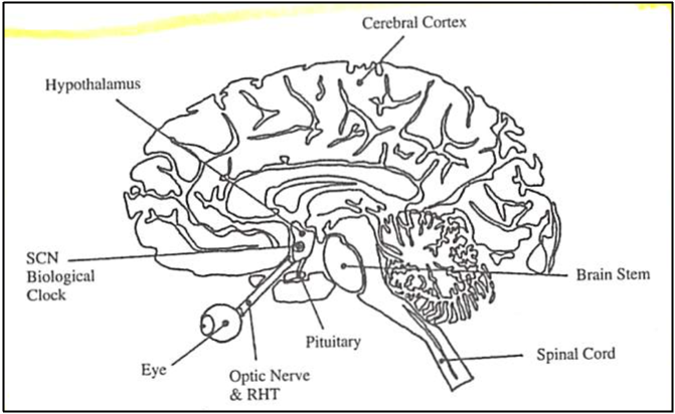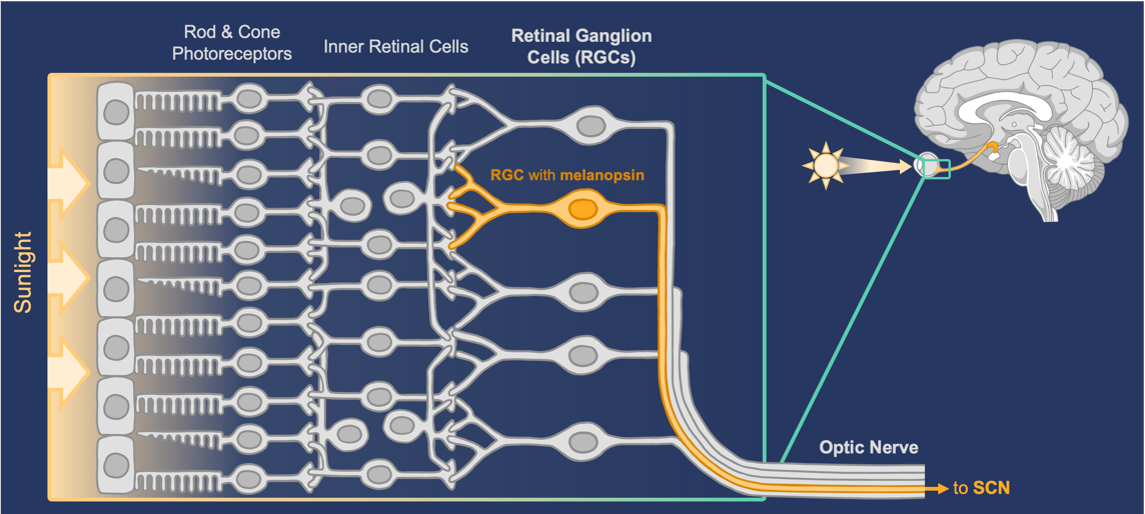Human Chronobiology
Freelance project for Steven James, M.D.
I adapted medical textbook figures from the field of human chronobiology to pique interest and improve comprehension of complex topics. My designs aim to engage a diverse audience, including those with medical, scientific, and general or non-technical backgrounds. I created detailed and precise anatomical illustrations of the human brain and neural circuitry, highlighting key research findings through colorful, scientifically accurate graphics that reduced reliance on explanatory text. These figures were rendered for versatile use across digital and print media, such as PowerPoint presentations and books. 4 examples are shown below. Original figures are shown on the left, adapted versions on the right.
Original
Adapted
Figure 1. Key brain structures involved in regulating alertness & sleep
Original caption: “The biological clock regulating daily cycles of alertness and sleep is the suprachiasmatic nucleus (SCN), a small (1/3 mm) cluster of nerve cells in the hypothalamus, one of the oldest parts of the brain. A special nerve pathway (Retinohypothalamic Tract conveys information about light and darkness in the environment from the eyes to the SCN.”
FIGURE 2. Cellular relay of light information in human retina
Original caption: “Rods and cones convey visual information to the retinal ganglion cells via the second-order neurons of the inner retina...The optic nerve is formed of the axons of all the ganglion cells and this nerve takes light information to the brain. A subset of photosensitive retinal ganglion cells...also detect light directly.”
FIGURE 3. 24-hour cyclic variation in human physiology & behavior
Original caption: “An illustration of the average 24-hour variation in different parameters of adult human physiology and behaviour.”
FIGURE 4. Co-varying changes in human physiology & behavior over 24h
Original caption: “Examples of circadian changes in adult human physiology and behaviour that persist in the laboratory under constant conditions. The grey vertical bar indicates the approximate sleep time between 22.00 and 07.00.”







